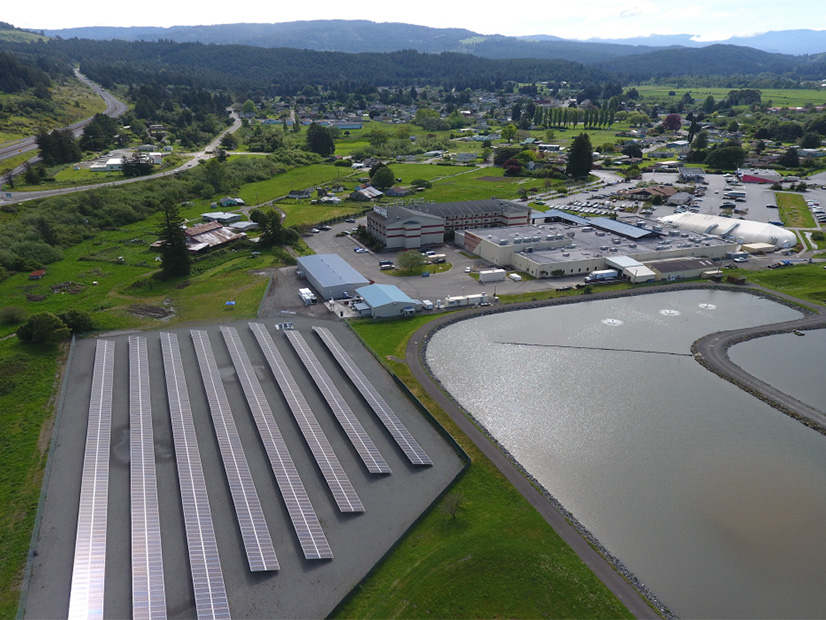
The California Public Utilities Commission on Thursday approved rules for its Microgrid Incentive Program, a $200 million effort to support the development of microgrids in communities prone to extended blackouts from wildfires, earthquakes and line outages.
The approved decision allocated funds to the state’s three large investor owned utilities — $79 million for Pacific Gas and Electric, $83 million for Southern California Edison and $17.5 million for San Diego Gas & Electric — to “build complex projects that can operate independently for extended periods and serve multiple customers in disadvantaged and vulnerable communities,” the CPUC said in a statement.
Selected microgrid projects can receive up to $15 million each.
“The Microgrid Incentive Program will provide valuable support to disadvantaged and vulnerable communities towards ensuring they are not left behind in the broader statewide resiliency effort,” Commissioner Genevieve Shiroma, who led the proceeding, said in the statement.
“These communities tend to be located in more electrically isolated areas with greater distances to essential services, experience more outages, and have less accessibility to entities with backup power. This program will also provide the funding and education many communities need to meaningfully participate in the program.”
Disadvantaged and vulnerable communities eligible for the grants include those in areas at high risk of wildfires or that have experienced public safety power shutoffs, the intentional blackouts that utilities use to prevent their equipment from starting blazes. Also eligible are locations prone to damaging earthquakes and those with lower levels of reliability because they are served by one of the worst-performing circuits in a utility’s system.
The Blue Lake Rancheria microgrid, in an area that meets all the requirements, is often cited as an example of the value of microgrids in California. It uses a 420-kW solar array and battery storage to power a hotel and casino with electric vehicle charging, a convenience store gas station and water systems used by nearby residents during frequent outages, including to keep cell phones charged. It was funded by a California Energy Commission grant last decade.
The CPUC proceeding began in 2019 in response to Senate Bill 1339, which required the commission to “facilitate the commercialization of microgrids for distribution customers of large electrical corporations” and to “develop separate large electrical corporation rates and tariffs … to support microgrids.”
Thursday’s decision also directed PG&E, SCE and SDG&E to conduct outreach and consult with potential program applicants, and to help successful applicants develop community microgrids. It requires the utilities to post handbooks to their websites within six months to “guide applicants through the program and explain how potential projects will be evaluated.”
The utilities must submit quarterly status reports to the CPUC until the funds run out.


